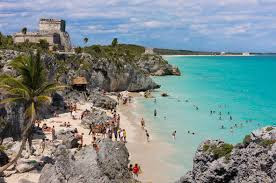Hello,
The Mexican telecommunication regulator IFT - Instituto Federal de Telecomunicaciones has approved amateur radio operation on the new WRC-15 the 60m band allocation on secondary basis. The band is 5351.5 - 5366.5 kHz with maximum permitted power of 20W EIRP.
Mexican National Frequency Table is available here:http://cnaf.ift.org.mx/Consulta/Index
(Tnx: Paul, G4MWO, XE2O, FMRE)



Throughout the landscape you find prehistoric ruins. As the center of hundreds of Mesoamerican cultures and civilizations such as the Maya and Aztec, Mexico, there are 187 archeological sites managed by the Institute of Anthropology and History, and still others yet to be discovered. In the Yucatan Peninsula there are more ruins than budget to unearth them (excavating a pyramid can take up to 20 years.)
The terrain is full of mountains. For some strange reason, people rarely associate Mexico with mountains. But note all the ranges: The Western Sierra Madre–essentially the considered the Rockies from the US and Canada–extends over 1,250 km from Sonora to Nayarit. Paralleling that is the eastern Sierra Madre range which spans 1,300 km from Texas to Oaxaca. The Southern Sierra Madre reaches from Jalisco to the Isthmus of Tehuantepec in Oaxaca. Finally, the jagged sierras of Chiapas and Baja California rise up through those statesas well.
73 - Petr, OK1RP
.../-.-
















































